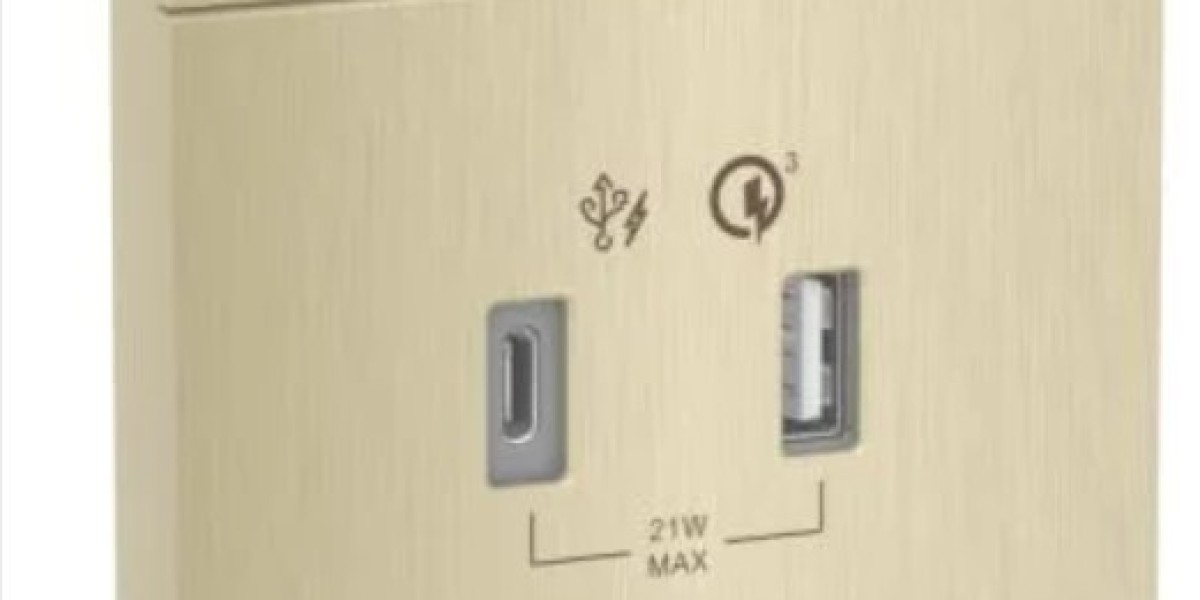A 16 amp MCB (Miniature Circuit Breaker) is an essential component in electrical systems, designed to protect circuits from damage caused by overloads or short circuits. MCBs, in general, play a critical role in ensuring the safety of homes, businesses, and industrial setups by automatically disconnecting the electrical supply when abnormal conditions are detected. The 16 amp rating refers to the current-carrying capacity of the MCB, making it suitable for a range of electrical appliances and circuits.
In this article, we will explore the features, uses, benefits, and price factors of 16 amp MCBs in detail. We'll also dive into the factors affecting the price of MCBs and provide tips for selecting the right one for your electrical setup.
- What is a 16 Amp MCB?
An MCB is a type of automatically operated electrical switch that safeguards an electrical circuit by cutting off power when it detects excess current. The 16 amp MCB is specifically rated for circuits that require protection against overcurrent up to 16 amperes.
Key Features:
- Current Rating: 16A, meaning it allows a maximum current of 16 amps to flow through the circuit. If the current exceeds this threshold, the MCB will trip.
- Voltage Rating: Typically used for single-phase circuits with a voltage of around 230V-240V in residential and small commercial installations.
- Breaking Capacity: The ability to interrupt the current without causing damage to the MCB or the connected devices. Standard breaking capacities for residential MCBs range from 6kA to 10kA.
- Pole Type: Available in single-pole (1P), double-pole (2P), triple-pole (3P), and four-pole (4P) configurations, though single-pole MCBs are most common for household use.
- Trip Curve: Different trip curves, such as B, C, and D curves, define the speed and sensitivity of the MCB to overload and short circuit conditions. For residential use, the B and C curve MCBs are typically used.
- Common Uses of 16 Amp MCBs
The 16 amp MCB is commonly used for circuits that power mid-range electrical appliances. The applications typically include:
Power Outlets and Sockets: In residential setups, 16A MCBs are often installed to protect circuits connected to heavy-duty appliances like washing machines, microwaves, and air conditioners.
Lighting Circuits: For homes and commercial spaces with high-power lighting setups, such as floodlights or multiple high-wattage bulbs, a 16A MCB can ensure the circuit remains safe from overload.
Water Heaters (Geysers):Geysers or water heaters, which can draw significant power, often require the protection of a 16A MCB to prevent electrical mishaps.
Small Industrial Equipment: In small industrial or workshop environments, 16A MCBs are used to protect equipment such as drills, grinders, and other small machines.
Kitchen Appliances: High-power kitchen appliances like ovens, toasters, and dishwashers typically run on circuits protected by a 16A MCB, ensuring safety during operation.
- How Does a 16 Amp MCB Work?
MCBs operate by continuously monitoring the current flowing through the circuit. The internal mechanism consists of a bimetallic strip and a magnetic coil:
- Overload Condition: If the current exceeds 16 amps but does not reach a dangerous level, the bimetallic strip bends due to heat generated by the excess current. This mechanical movement causes the MCB to trip, breaking the circuit and stopping the flow of electricity.
- Short Circuit Condition: If a short circuit occurs (where a large current surge happens very quickly), the magnetic coil within the MCB creates a magnetic force strong enough to instantly trip the breaker, protecting the circuit and connected devices.
After the MCB has tripped, it can be manually reset by flipping the switch back to the "ON" position after resolving the fault.
- Benefits of 16 Amp MCBs
Enhanced Safety: The primary function of an MCB is to protect circuits from potentially damaging current surges. In the case of a 16A MCB, it ensures that mid-range electrical appliances and devices are not subjected to dangerous overcurrent conditions, reducing the risk of fires and electrical accidents.
Automatic Operation: Unlike traditional fuses, which need to be replaced after they blow, MCBs are automatically resettable. This means that after the fault is cleared, the MCB can be switched back on without the need for replacement parts.
Durability: MCBs are designed for repeated use and can trip and reset many times without failure. This makes them highly durable and reliable for long-term operation.
Accurate Fault Detection: MCBs are far more sensitive than fuses, allowing them to detect and react to faults with greater precision, reducing the risk of damage to appliances and wiring.
- Factors Affecting the Price of 16 Amp MCBs
The price of a 16A MCB can vary depending on several factors, including:
Brand: Well-known brands like Schneider Electric, Legrand, Havells, and Siemens typically offer higher-priced MCBs due to their reputation for quality, durability, and safety. These brands invest in superior materials, rigorous testing, and compliance with international safety standards.
Breaking Capacity: MCBs with higher breaking capacities (such as 10kA) tend to be more expensive than those with lower capacities (such as 6kA). The breaking capacity indicates the MCB's ability to safely interrupt high current levels during a fault.
Type of MCB (Pole Type): Single-pole MCBs are more affordable compared to double-pole or triple-pole MCBs, as the latter offer protection for multiple live wires. Single-pole MCBs are usually sufficient for standard household use, while multi-pole MCBs are used for three-phase systems and industrial applications.
Trip Curve: The trip curve defines how quickly the MCB will react to an overload or short circuit. B and C curve MCBs, which are commonly used in homes and commercial spaces, are more affordable. D curve MCBs, which are designed for higher inrush currents (like motors), are more expensive.
Compliance with Safety Standards: MCBs that comply with international safety certifications, such as IEC standards, tend to be more expensive. These certifications ensure that the MCB has passed rigorous safety and performance testing.
- Price Range of 16 Amp MCBs
The price of a 16A MCB can vary based on the factors discussed above. On average:
- Standard 16A MCBs with a breaking capacity of 6kA can range from ₹200 to ₹500 ($2.50 to $6.50).
- Higher-end 16A MCBs with additional features, higher breaking capacity (10kA), or from premium brands may cost between ₹500 and ₹1,500 ($6.50 to $20).
It is important to note that prices can fluctuate depending on the region, retailer, and any additional features (such as smart MCBs or those integrated with IoT systems).
- How to Choose the Right 16 Amp MCB
When selecting a 16A MCB for your home or commercial use, consider the following factors:
Determine the Load Requirement: Ensure that the circuit's total load does not exceed the 16A limit. For high-power appliances, a higher-rated MCB might be necessary.
Check the Trip Curve: Choose the right trip curve (B, C, or D) based on the nature of the electrical load. For general household appliances, a B or C curve MCB is usually appropriate.
Ensure Compliance with Standards: Always choose MCBs that meet the relevant safety and performance standards, such as IEC 60898 for residential circuit breakers.
Choose a Reputable Brand: Opting for a reputable brand ensures quality, reliability, and durability. Brands like Schneider, Legrand, and Havells are known for their high safety standards and longevity.
- Installation of 16 Amp MCBs
Tools Required:
- Insulated screwdriver
- Voltage tester
- Wire stripper
- Distribution board or MCB box
Step-by-Step Guide:
- Turn Off the Power: Before starting, switch off the main power supply to avoid electric shock.
- Access the Distribution Board: Open the distribution board or MCB box where the 16A MCB will be installed.
- Remove the Faulty MCB (if replacing): If you are replacing an old or faulty MCB, carefully disconnect the wires and remove the old MCB.
- Install the New MCB: Mount the new 16A MCB onto the DIN rail and secure it in place.
- Connect the Wires: Connect the live wire to the input terminal and the load wire to the output terminal. Ensure the connections are tight and secure.
- Test the MCB: Once installed, switch on the power and test the MCB by applying a load to ensure it functions correctly.
A 16 amp MCB is an essential safety device for protecting electrical circuits from overloads and short circuits, particularly in residential and small commercial setups. When choosing a 16A MCB, it's important to consider factors such as brand, breaking capacity, trip curve, and compliance with safety standards. The price of a 16A MCB can vary depending on these factors, with standard options being more affordable and premium options offering additional features.
Investing in a high-quality MCB ensures the long-term safety of your electrical system and appliances, making it a worthwhile investment for both homeowners and business owners alike.








